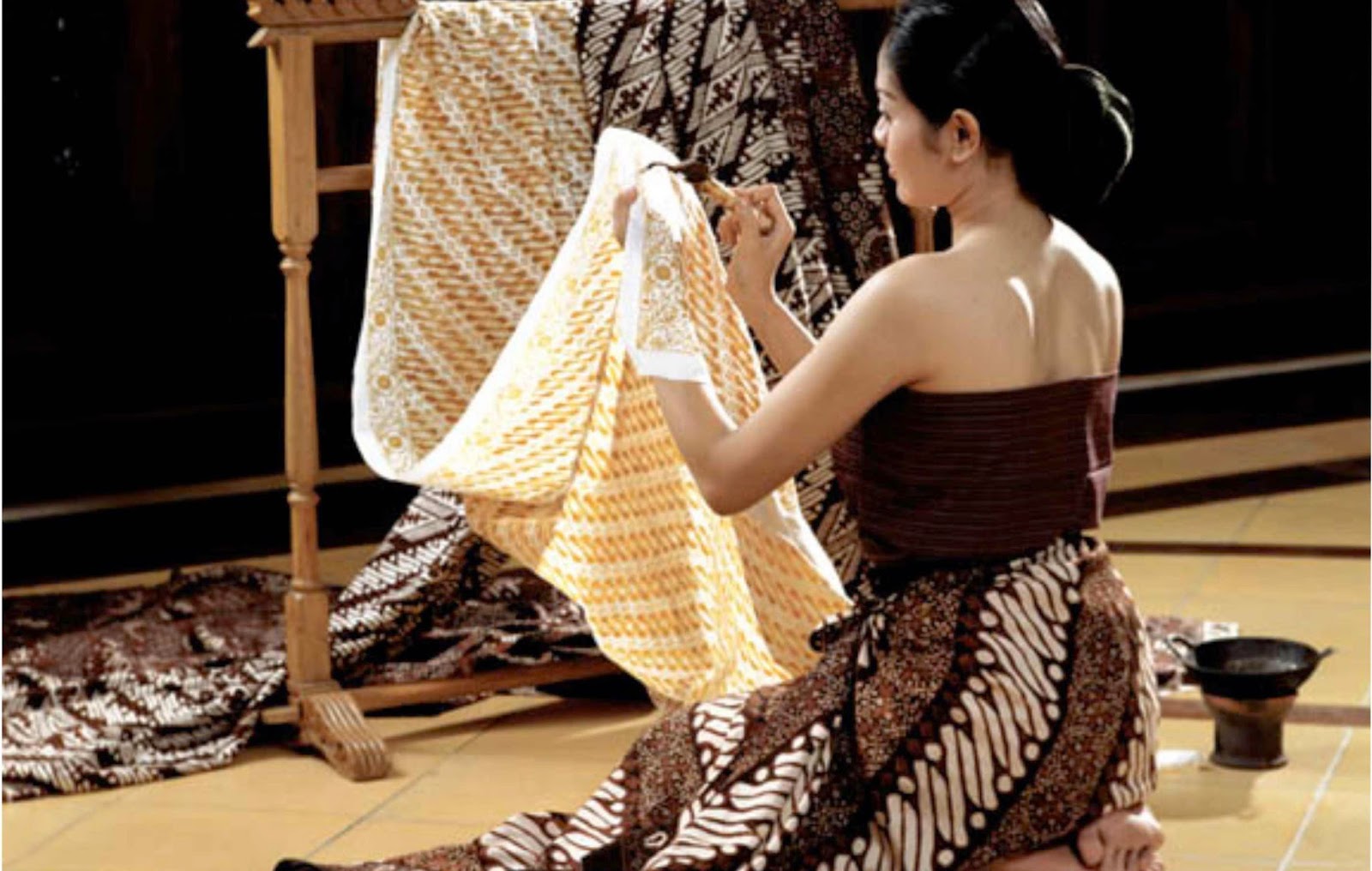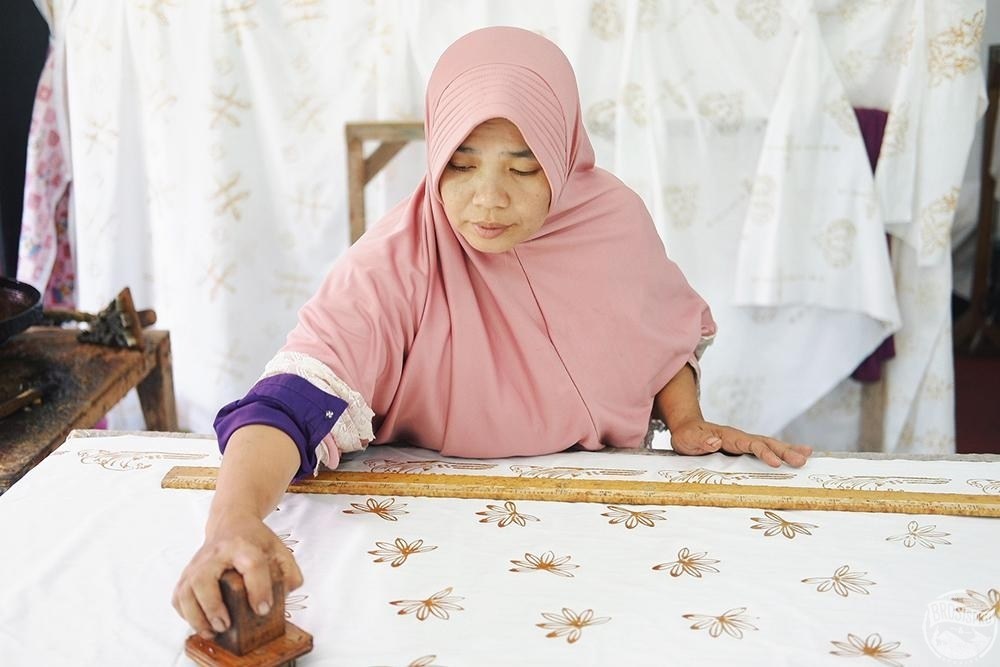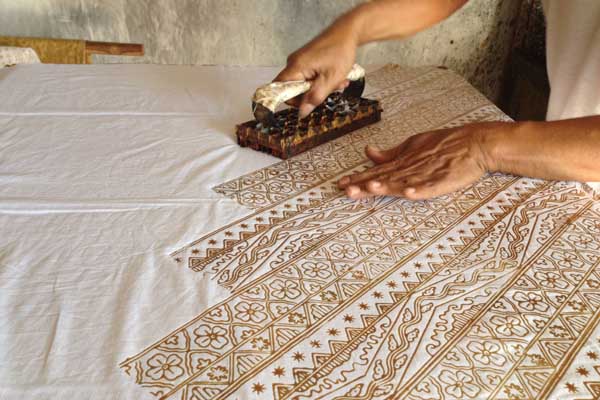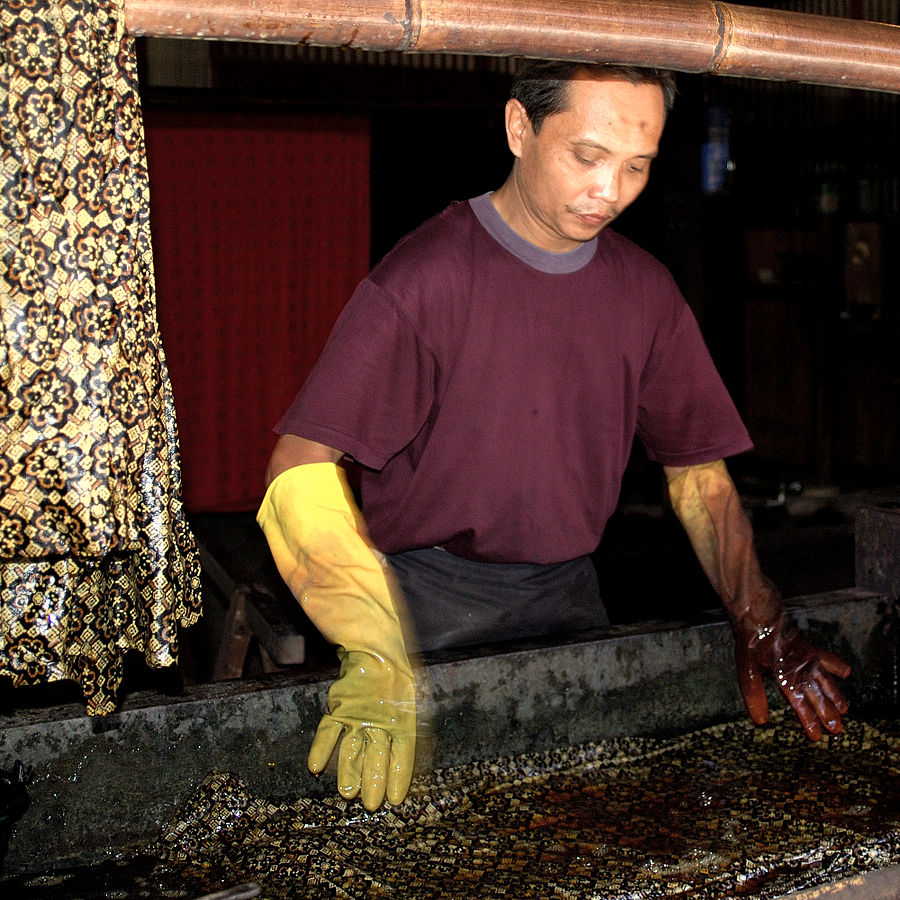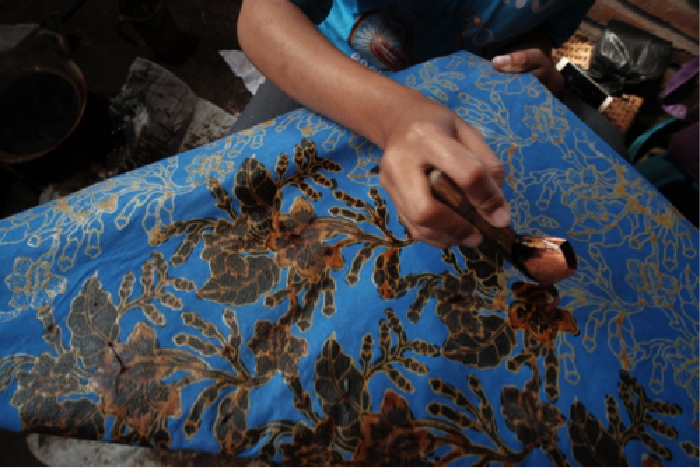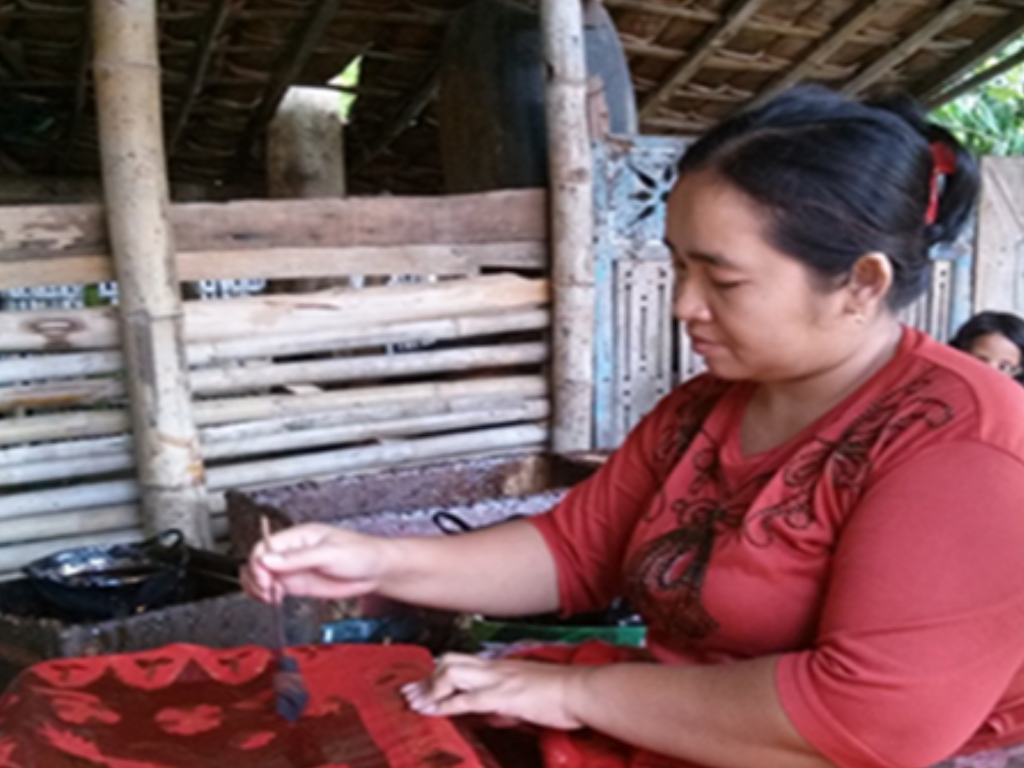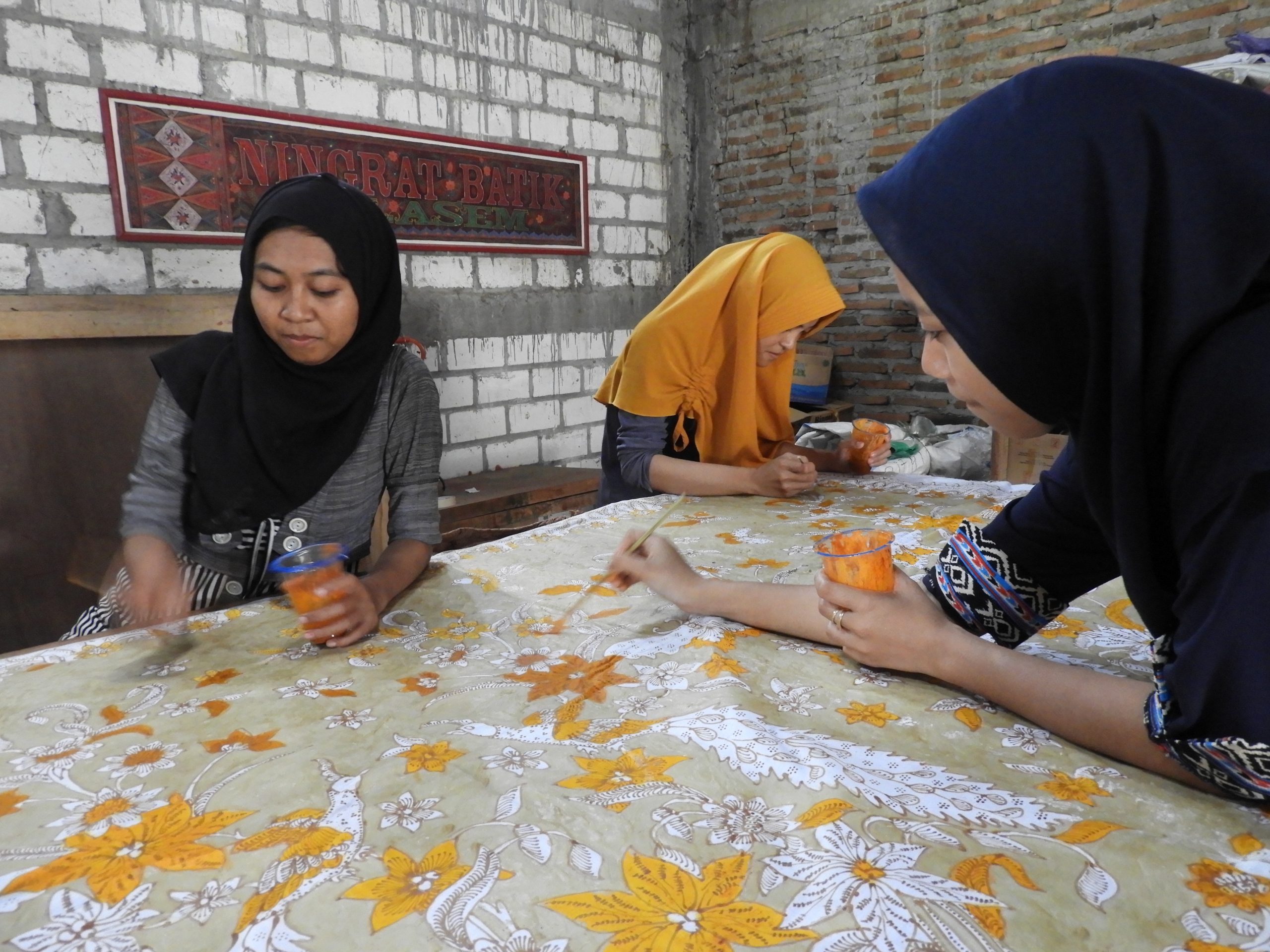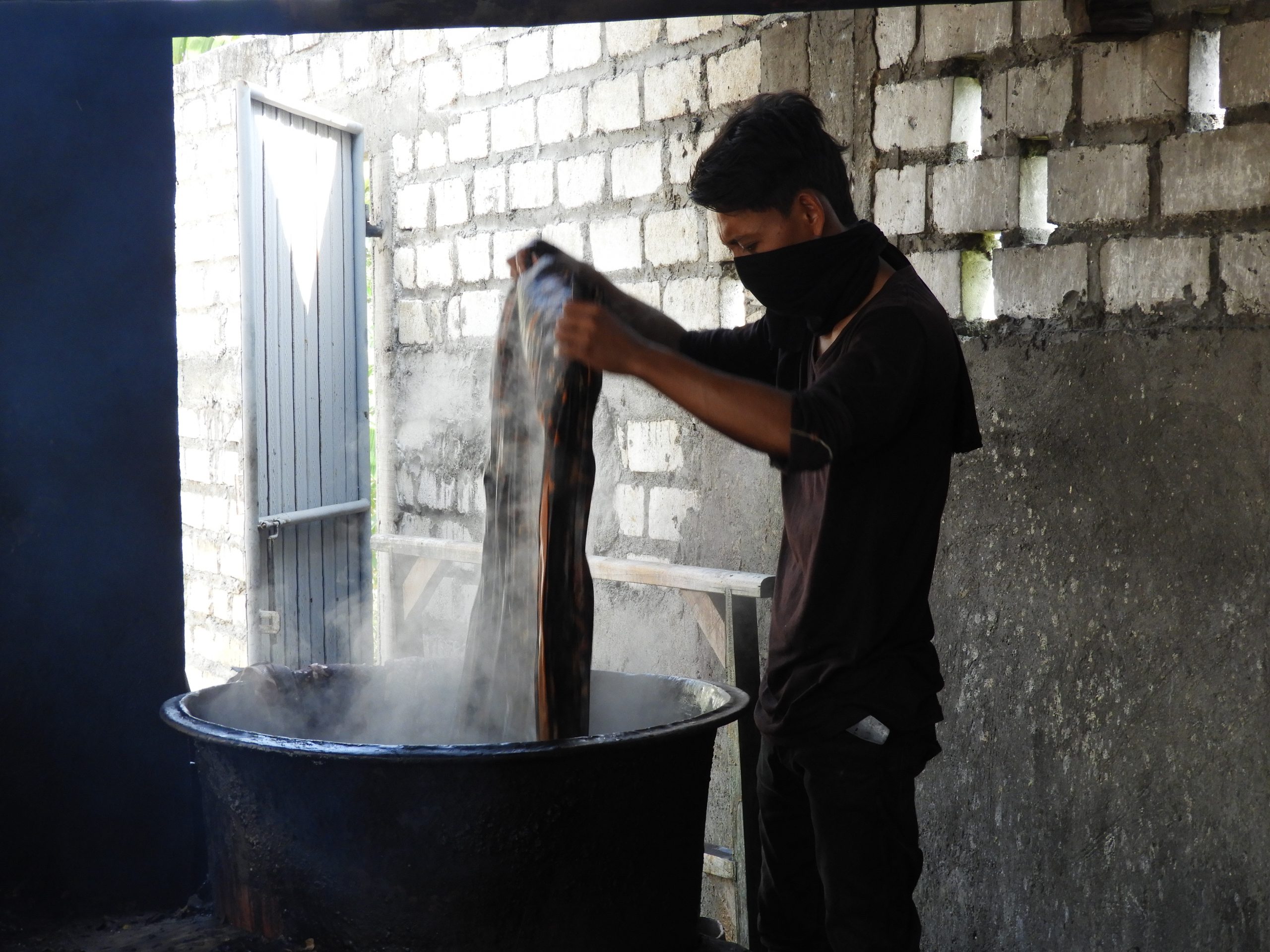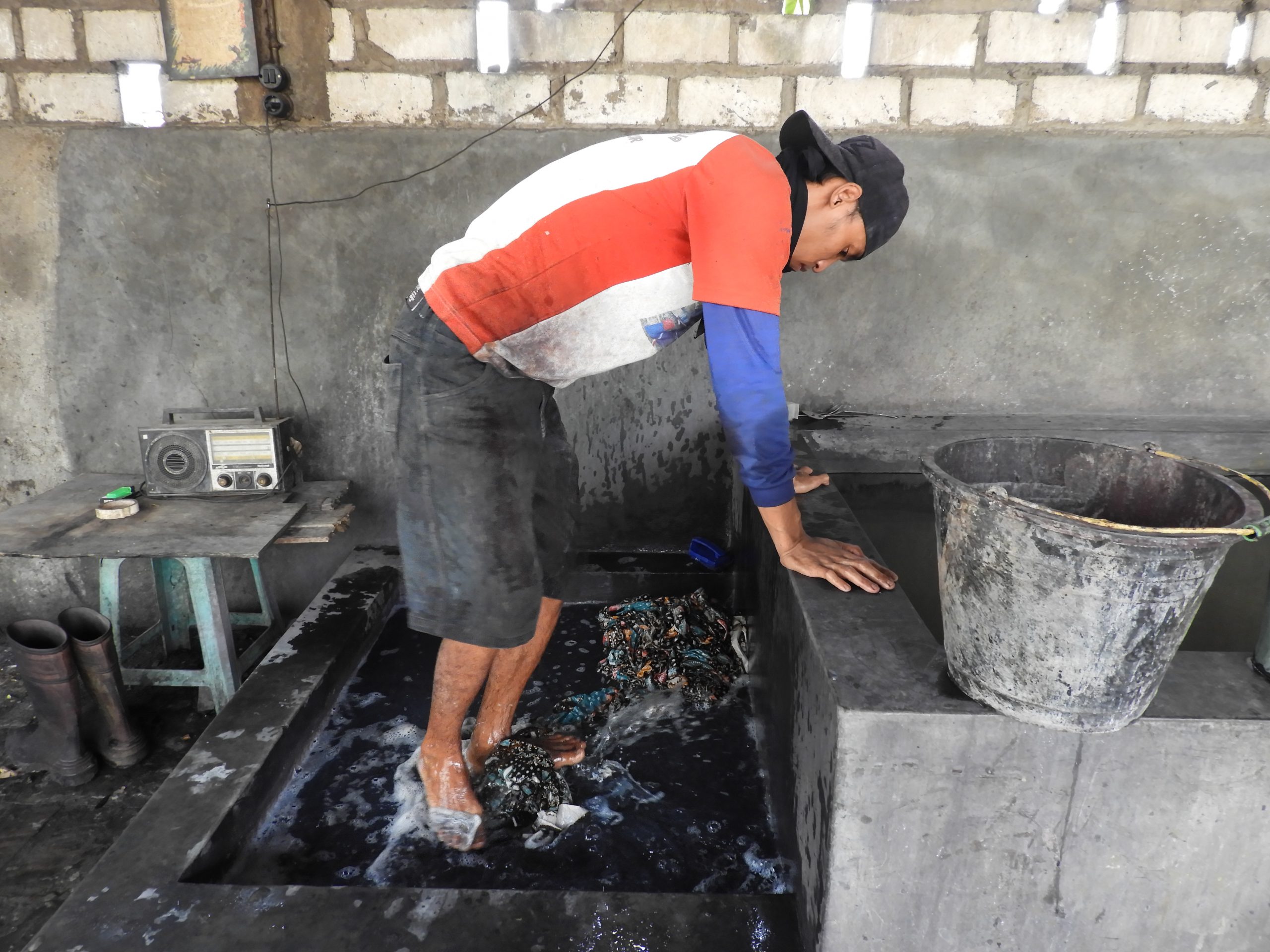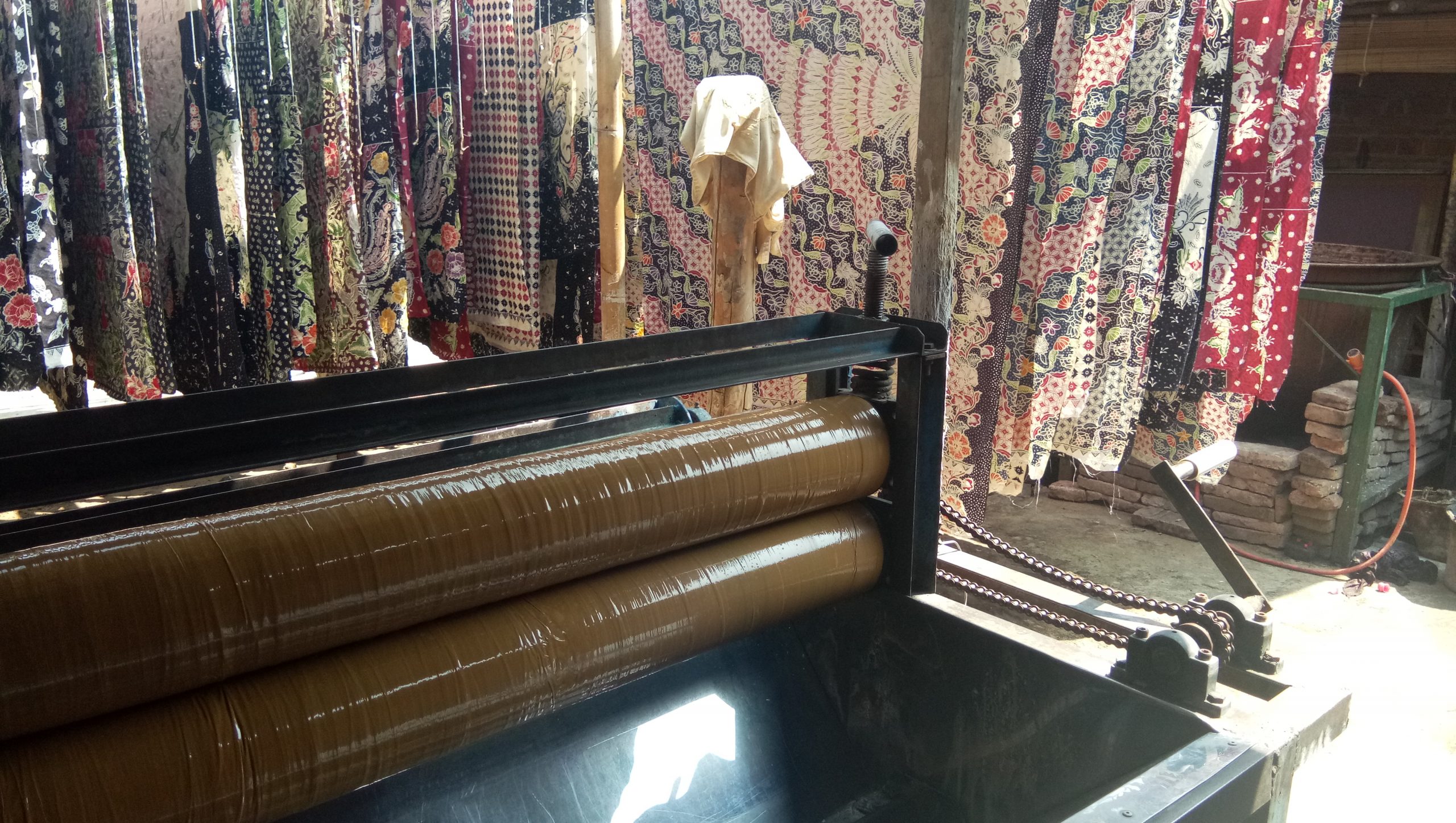Batik Production Process
Learn the Essence of Batik Intangible Cultural Heritage!
wax resist dyeing technique
Batik production can take 1 month up to 2 years of working time depending on the purposes of the textile creation and the colour complexity. The Batik handwriting textile is generally made with 6 – 8 design steps, ranging from wax patterning to colouring process. The artists use Canting, as a tool to put hot melted wax on the cloth.
Phase #1A
Nglengreng
Wax Patterning – Handwritten Batik
Nglengreng is a process that refers to draw the Batik pattern on a piece of linen cloth by hands using the hot-melted wax and bronze tool called Canting. This process is also called Nyanting.
First of all, put the linen cloth on a piece of squared wooden stick or on a flat surface. Boil the wax up to 60 – 70 degrees Celsius. Once the wax liquid is ready, take the hot liquid by using the Canting bronze tool and draw the pattern on the linen in one go. Regular practice is needed in order to produce a neat and consistent Batik pattern.
Photo: wanita.or.id
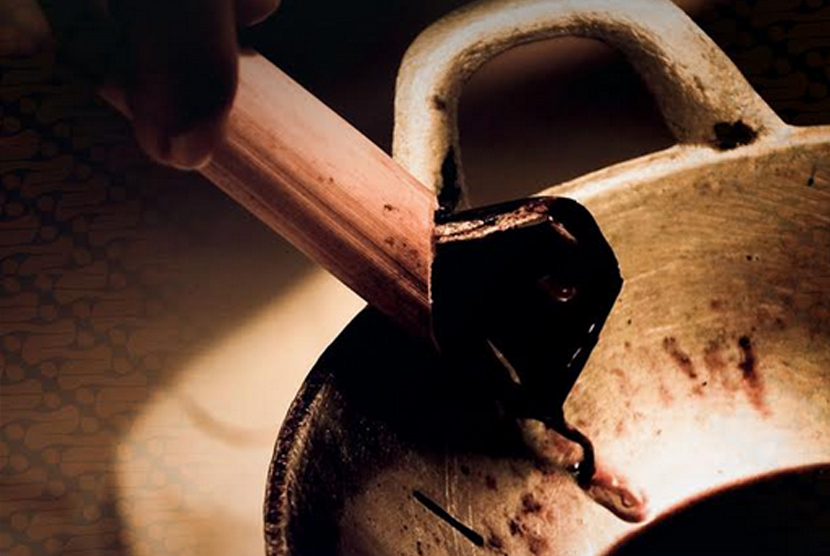
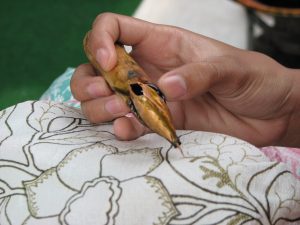
Phase #1B
Ngecap
Wax Patterning – Stamped Batik
Ngecap is a process that refers to produce Batik patterns on a piece of linen cloth by using a bronze stamp filled with hot-melted wax.
Put the linen cloth on a flat surface. Boil the wax up to 60 – 70 degrees Celsius. Once the wax liquid is ready, dip the bronze stamp into the wax bowl. Take the stamp out of the bowl and remove the excessive drops of the liquid. Set the linen on a flat surface and stamp the wax liquid on top of the textile. The wax stamping method is the best way to create geometrical patterns and produce repetitive designs.
Phase #2
Nyelup
Textile Colouring
Nyelup refers to the soaking process of the Batik textile in a barrel filled with natural/chemical dye solutions.
The colour soaking process can take days even months depending on the complexity of the Batik designs. For example, certain type of Batik such as Genthongan Batik of Bangkalan in Madura Island may require 6 months period of soaking process.
Colour soaking process (photo: Rosino)
Phase #3
Nembok
Wax Covering
Nembok refers to cover desired parts with wax in order to protect those areas from getting dyed.
The perfect tool for this process is the Canting with the larger spout. This tool helps the producer to release the wax liquid without hassles. When it is done, the textile can be dyed in the next coloring process.
Photo: News.Detik
Major outlining, done by a Batik producer in Madura Island (Photo: Research documentation, Puspita Ayu Permatasari)
Detailed painting, done by a Batik producer in Lasem, Central Java (Photo: Research documentation, Puspita Ayu Permatasari)
Phase #4
Nyolet
Brush Outlining/Detailed Painting
Nyolet refers to paint the outline and the Batik patterns using the brush and dyes.
The artisans use different kinds of brush to paint the outline and the motif details. It is suggested to use a bigger brush for outlining process and the tiny one for detailed painting. There are two kinds of colourants: natural dyes and synthetic colourants. The natural dyes can be used to produce a little bit sombre, rustic and classic look, while the synthetic ones usually produce stronger bright colours of Batik artwork.
Phase #5
Nglorod
Wax Removal with Hot & Cold Water
Nglorod refers to the wax removal process by washing the Batik textile in hot boiled water with a mixture of soda ash (sodium carbonate) solutions. Once the waxes are removed, the textile is washed with cold water.
This process can take up to 2-3 days depending on the thickness of the wax. For producing high quality artworks, some artisans usually also add a few finishing processes such as:
- Fiksasi : Locking the colours in the Batik textile using natural dye solution called Gondorukem. Gondorukem is a natural water solution that is made of the sap of Pine Tree.
- Mordanting: Improving the colour durability of the natural dyes on Batik fabrics as well as increasing its colour evenness. This is done by adding Turkish Red Oil (TRO) natural solutions in the soaking water.
Hot washing process, done by a Batik producer in Lasem, Central Java (Photo: Research documentation, Puspita Ayu Permatasari)
Cold washing process (Photo: Research documentation, Puspita Ayu Permatasari)
Cloth drying in Piliang Batik Village in Sragen, Central Java (Photo: Research documentation, Puspita Ayu Permatasari)
Phase #6
Njemur
Cloth Drying
Njemur refers to cloth drying process. The drying process may take 1-2 days depending on the weather. Once dried, the textile shall be neatly folded and stored in a dry place away from direct sunlight.



